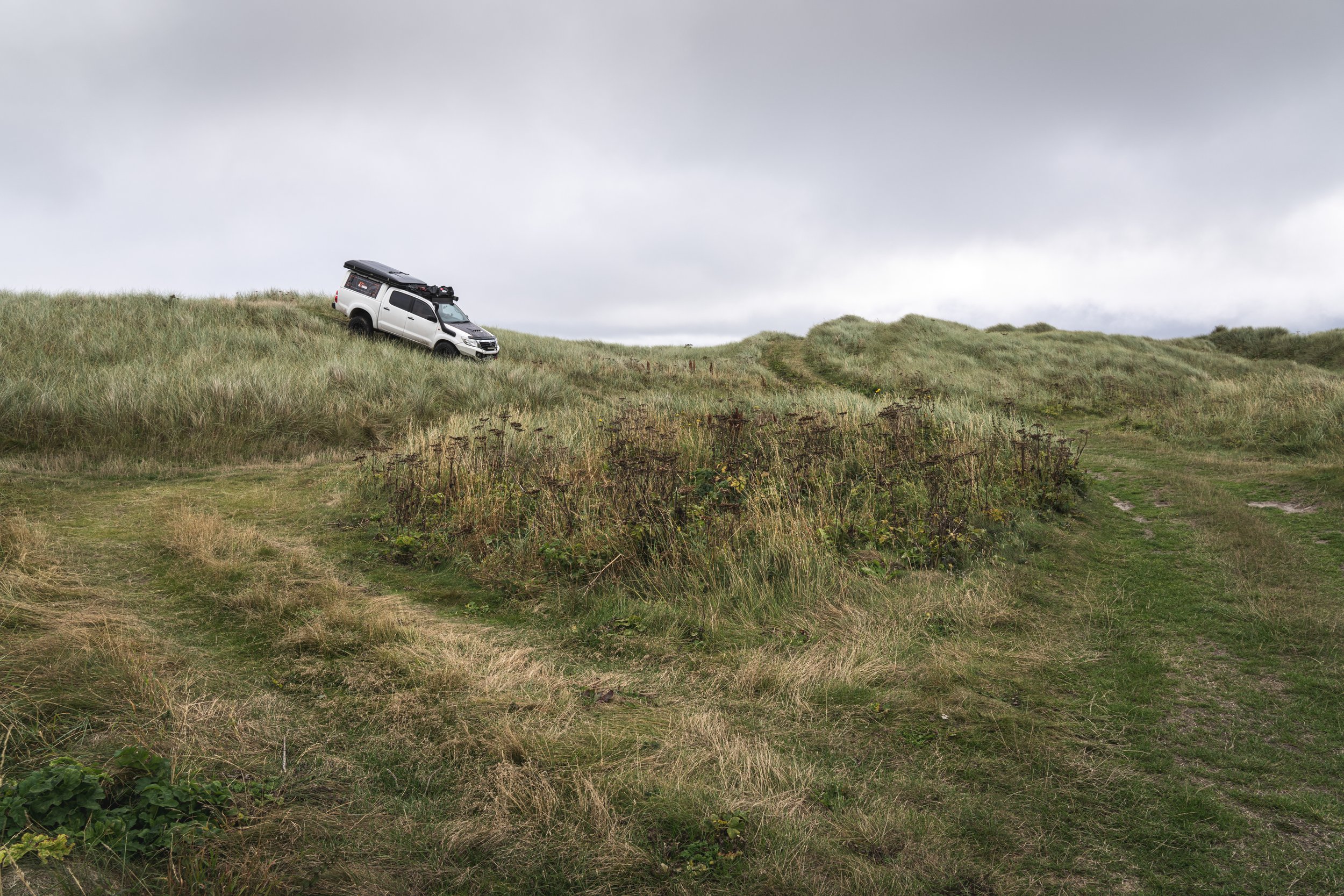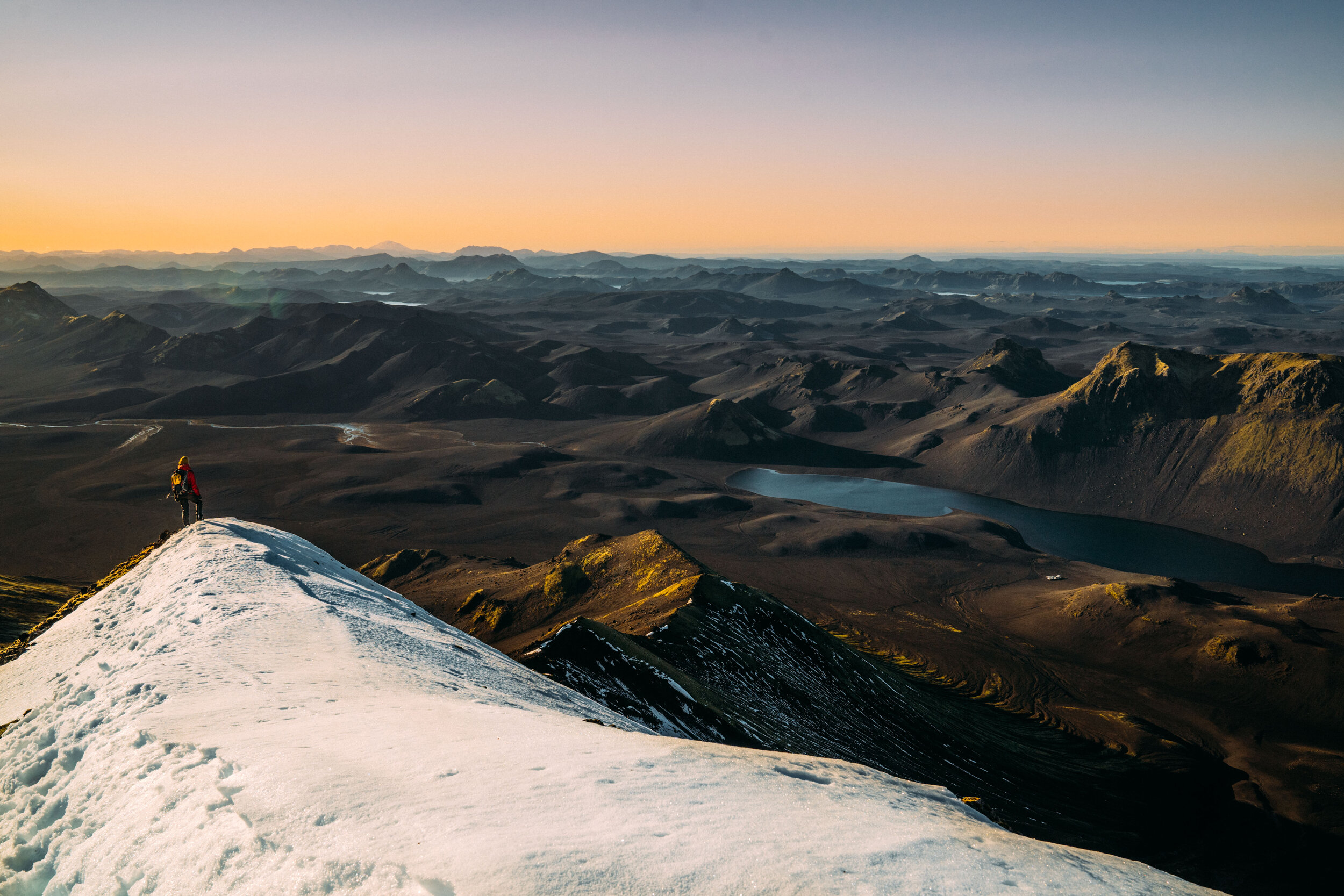Unchanged for Millennia

Exploring the rugged beauty of the Orkney Islands: from the rustic and weather-beaten streets of Stromness to the serenity of camping on Warbeth Beach. The Ring of Brodgar and the Skara Brae village hint at an ancient past and ancient people long gone.
Explorando la belleza agreste de las Islas Orkney: desde las calles rústicas y curtidas por el clima de Stromness hasta la serenidad de acampar en Warbeth Beach. El Anillo de Brodgar y el pueblo de Skara Brae insinúan un pasado antiguo y un pueblo antiguo desaparecido.
Words by/palabras de Lisa Morris, Images by/imágenes de Jason Spafford
The Orkney archipelago, situated between the North Atlantic and the North Sea, is a diverse treasure trove to be explored. White sandy beaches are caressed by crashing waves, wartime ruins stand devoid of trees, and houses older than the Pyramids coexist with prehistoric stone tombs.
El archipiélago de las Orcadas, situado entre el Atlántico Norte y el Mar del Norte, es un tesoro oculto diverso por explorar. Las playas de arena blanca son acariciadas por las olas, las ruinas de la guerra están desprovistas de árboles y las casas más antiguas que las pirámides coexisten con tumbas de piedra prehistóricas.
Abundant seal colonies, occasional Orca sightings, and echoes of Old Norse Viking heritage promise a rare find on these historically rich and culturally diverse islands.
Abundantes colonias de focas, avistamientos ocasionales de orcas y ecos de la herencia vikinga nórdica antigua prometen un hallazgo raro en estas islas históricamente ricas y culturalmente diversas.
Our journey starts in Stromness, a lovely port town on Haven Bay's shores. Its charming streets, lined with unsecured bicycles, invite us to experience the vibrant island culture.
Nuestro viaje comienza en Stromness, una encantadora ciudad portuaria a orillas de Haven Bay. Sus encantadoras calles, bordeadas de bicicletas sin seguro, nos invitan a vivir la vibrante cultura isleña.
Following the advice of a softly-spoken Orcadian named Scott, we find a tranquil spot to camp on Warbeth Beach. It’s a Site of Special Scientific Interest adorned with 1,500-million-year-old pinkish-gray crystalline granite rock and teeming with fish fossils. Here, amid the grassy wilderness of undulating hills, exposed hilltops, and captivating villages, we are ready to embrace the Orkney Islands on foot and in our 4WD.
Siguiendo el consejo de un orcadiano de voz suave llamado Scott, encontramos un lugar tranquilo para acampar en Warbeth Beach. Es un sitio de especial interés científico adornado con roca de granito cristalino de color gris rosado de 1500 millones de años de antigüedad y repleto de fósiles de peces. Aquí, en medio del desierto cubierto de hierba de colinas ondulantes, cumbres expuestas y pueblos cautivadores, estamos listos para abrazar las Islas Orkney a pie y en nuestro 4x4.
The sun breaks through the low-hanging clouds, revealing a windswept and dark sea. The breeze keeps the biting midges at bay. At the same time, a congregation of noisy bonxies, gulls, guillemots, shags, and kittiwakes call out while patrolling a shoreline of Northern marsh orchids and Yellow flag irises.
El sol se abre paso a través de las nubes bajas, revelando un mar oscuro y barrido por el viento. La brisa mantiene a raya a los mosquitos que pican. Al mismo tiempo, una congregación de ruidosos bonxies, gaviotas, araos, cormoranes moñudos y gaviotas tridáctilas gritan mientras patrullan una costa de orquídeas de los pantanos del norte y lirios bandera amarilla.
Later that night, our rooftop tent is buffeted by a driving wind, which keeps us wide awake. We climb out of our tent in the early morning twilight and see a pewter-blue light settling over a thick white mist that hangs over the ocean.
Más tarde esa noche, nuestra carpa en la azotea es azotada por un fuerte viento que nos mantiene despiertos. Salimos de nuestra tienda en el crepúsculo de la mañana temprano y vemos una luz azul peltre asentándose sobre una espesa niebla blanca que se cierne sobre el océano.
We head northeast to the Ring of Brodgar, a neolithic stone circle dating to 2,500 BCE, some 500 years older than Stonehenge. We arrive at sunset, and evening light casts orange-gold hues over the loch and stones.
Although the exact purpose of the Ring of Brodgar is unknown because it was built by ancient people whose culture wasn’t well-documented, it is widely believed to have been used for rituals, ceremonies, gatherings, and possibly for observing the stars and religious activities during the Neolithic period.
Nos dirigimos hacia el noreste hasta el Anillo de Brodgar, un círculo de piedra neolítico que data del 2500 a. C., unos 500 años más antiguo que Stonehenge. Llegamos al atardecer, y la luz del atardecer proyecta tonos anaranjados y dorados sobre el lago y las piedras.
Aunque se desconoce el propósito exacto del Anillo de Brodgar porque fue construido por personas antiguas cuya cultura no estaba bien documentada, se cree ampliamente que se usó para rituales, ceremonias, reuniones y posiblemente para observar las estrellas y actividades religiosas durante el Neolítico.
Skara Brae lies five miles to the northwest in the heart of Neolithic Orkney. Dating back 5,000 years, this UNESCO World Heritage site was once home to a thriving farming community of around 100 people.
Skara Brae se encuentra a cinco millas al noroeste en el corazón del Neolítico Orkney. Con una antigüedad de 5000 años, este sitio declarado Patrimonio de la Humanidad por la UNESCO fue el hogar de una próspera comunidad agrícola de unas 100 personas.
Due to wind and erosion, Skara Brae remained hidden by sand dunes for thousands of years. Over time, sand from nearby beaches and coastal areas was blown by the wind and accumulated around the structures, gradually burying them beneath the dunes.
Naturally, this process provided a protective layer against decay and weathering, thus, allowing the ten structures today to remain relatively intact for centuries, preserving a remarkable glimpse into the lives of its ancient inhabitants.
Debido al viento y la erosión, Skara Brae permaneció oculta por las dunas de arena durante miles de años. Con el tiempo, la arena de las playas cercanas y las zonas costeras fue arrastrada por el viento y se acumuló alrededor de las estructuras, enterrándolas gradualmente bajo las dunas.
Naturalmente, este proceso proporcionó una capa protectora contra el deterioro y la intemperie, lo que permitió que las diez estructuras actuales permanecieran relativamente intactas durante siglos, preservando una visión notable de la vida de sus antiguos habitantes.
Walking through the partially underground passage and interconnected tunnel system, which was once illuminated by whale-oil lamps, we enter the rectangular layout of a typical Skara Brae house. There is a central hearth and box beds on either side, with furniture crafted from nearby flagstones, revealing an astonishingly civilized life despite the absence of metal tools.
Caminando a través del pasaje parcialmente subterráneo y el sistema de túneles interconectados, que una vez estuvo iluminado por lámparas de aceite de ballena, ingresamos al diseño rectangular de una casa típica de Skara Brae. Hay un hogar central y camas de caja a cada lado, con muebles hechos a mano con losas cercanas, que revelan una vida asombrosamente civilizada a pesar de la ausencia de herramientas de metal.
At the nearby interpretation center, numerous artifacts from the site are on display, including gaming dice, a whalebone pin, and a mysterious carved stone ball.
En el centro de interpretación cercano, se exhiben numerosos artefactos del sitio, incluidos dados de juego, un alfiler de ballena y una misteriosa bola de piedra tallada.
The Stone Age villagers of Skara Brae were not just concerned with basic survival but also engaged in leisure activities, personal adornment, and the creation of intricate and enigmatic objects. Their ability to craft such artifacts using the available resources reflects an impressive knowledge, ingenuity, and cultural development for the Neolithic era.
Los aldeanos de la Edad de Piedra de Skara Brae no solo estaban preocupados por la supervivencia básica, sino que también se dedicaban a actividades de ocio, adornos personales y la creación de objetos intrincados y enigmáticos. Su capacidad para fabricar tales artefactos utilizando los recursos disponibles refleja un impresionante conocimiento, ingenio y desarrollo cultural para la era neolítica.
We step outside, feel the warm sun and cold wind against our faces, and look out over the treeless and rocky landscape that has remained unchanged for millennia.
Salimos, sentimos el sol cálido y el viento frío en la cara, y contemplamos el paisaje rocoso y sin árboles que se ha mantenido sin cambios durante milenios.





























